I rediscovered the Cairo tiling ten years ago, while pondering Euclid’s construction of the dodecahedron. About a year later my honors thesis student and MAT 103 teaching assistant Bonita Bryson (now Bonita Graham, currently a doctoral student at Wesleyan) found it, properly named, in David Kay’s “College Geometry: A Discovery Approach” (p. 266). In more recent years my interest in the Cairo tiling was further propelled by David Bailey’s magnificent page and related correspondence … so much so that I decided to devote this August’s post-swimming afternoons to it and, in particular, to its symmetrical, maplike colorings in six colors … returning to this blog after four-and-half years of absence (and mathematical activities elsewhere) … and on the fifth anniversary of my return to Greece at that!
As you see above, the Cairo tiling may be viewed as either a tesselation by pentagons or as a set of interlocking hexagons: no wonder that, following an hour exam, Bonita reported that some of my students were talking about pentagons while others were insisting on hexagons! [“Did you … give them … the Cairo tiling?”]
The Cairo tiling’s symmetry is of p4g type: vertical-horizontal reflections with in-between glide reflections (cmm structure) combined with diagonal glide reflections (pgg structure) into fourfold rotation (p4 structure); of course all three substructures offer twofold rotation (p2 structure) for free. (This type of planar symmetry was not uncommon in Arabic/Moorish culture, as discussed for example here.)
In the symmetry plan below fourfold and twofold rotation centers are denoted by squares and dots, respectively, reflection axes are shown in solid lines, and glide reflections are shown in dotted lines; glide reflection vectors are not shown, but it suffices to keep in mind that they are such that fourfold centers are glide-reflected to fourfold centers and twofold centers are glide-reflected to twofold centers:
[The reader is advised to match the two images above with each other before going further … even though what is coming — don’t forget to click on the colorings for enlargement — may be visually enjoyed with no further reference to symmetry!]
(I) All isometries preserved: p4g
There are many ways of distinguishing between these two colorings; in #1, for example, four colors are rotated right at each fourfold center and two colors are rotated at the next level (42), while the exact opposite (24) is the case in #2. The reader is encouraged to investigate the effect on color of all the other isometries of the initial tiling, and, more crucially, to observe that all isometries are consistent with color: all tiles of same color are mapped to tiles of one and only one color by each isometry of the pattern.
(II) Rotated orthogonality: p4
The following two colorings destroy — by way of color inconsistency — all reflections and glide reflections but preserve all fourfold rotations (and implied twofold rotations):
Observe how in both colorings there are NW-SE ‘bands’ of Azur, Blue, Red and NE-SW ‘bands’ of Green, Pink, Yellow orthogonal to each other (and rotated to each other by fourfold rotations). The same orthogonal bands exist in the p4g colorings already presented, being far more visible there because of their vertical-horizontal direction and the pattern’s good order instilled by reflection … and there will still be visible in many colorings to come 🙂
While I cannot quite guarantee that the above p4 6-colorings are the only ones, the sheer difficulty of obtaining them encourages me to conjecture so!
(III) Rescuing glide reflection (diagonally): pgg
Preserving just the diagonal glide reflections is easier: as the following six examples may indicate, one only needs to ‘climb down the stairs carefully’, that is coloring appropriately a succession of ‘vertical’ and ‘horizontal’ tiles along the diagonal glide reflection axis and ‘near’ it as well (with color consistency of the glide reflection in mind). (Fair enough, George, but you need to create consistent glide reflection in the orthogonal direction, too!)
#5 and #6 are very different visually, of course. Mathematically, notice that both the twofold centers and the fourfold centers — the latter acting now as twofold centers due to the inconsistency of fourfold rotation — move four out of six colors in two pairs, leaving the other two colors fixed (2/2 and 4/2, respectively). Further, in each NE-SW ‘staircase’ both #5 and #6 create the same six-color permutation (6×1), that is (AYBGRP) in #5 and (RYBPAG) in #6. But the NW-SE staircases are colored in three pairs of colors (2×3) in #5 and in six pairs of colors (2×6) in #6: (AG), (BP), (RY) and (AG), (AP), (BP), (BY), (RY), (RG), respectively.
Note here that, as their ‘codes’ denote, #6 cannot be distinguished from either of #7 or #8 based on the color-effect of their glide reflections; what separates #7 and #8 from #6 is the color-effect of their rotations, with both twofold and old fourfold centers moving now all six colors in three pairs (2/3 and 4/3, respectively). Less mathematically, in #6 each color appears in either vertical or horizontal tiles, while in #7 and #8 in both.
Of course #7 and #8 are hardly distinguishable from each other, their glide reflections and rotations (and even translations) behaving the same way; but they certainly differ visually from each other, so it is only fair to be viewed as distinct colorings indeed.
Notice that #9 is the only pgg coloring with glide reflections rotating all six colors in both directions, while #10 is the only pgg coloring with no glide reflection rotating all six colors! (There may of course exist other pgg colorings not provided here.)
(IV) Vanishing glide reflection: pg, p1
It takes more effort to produce colorings with glide reflection in only one diagonal direction: this difficulty is well illustrated by the fact that in the only such example I was able to obtain, #11 below, only those NE-SW axes that avoid ‘bow ties’ (i.e., pairs of tiles of same color with just one vertex in common) produce color-consistent glide reflection (of color effect (BGAPRY)):
In #12 above it may seem at first that there is color-consistent glide reflection along six-colored NE-SW ‘staircases’, but a closer look — two tiles beyond the perceived axis — reveals that this is not the case, so this coloring is of p1 type after all: only translations are color-consistent, with minimal NE-SW translation rotating three colors and minimal NW-SE translation rotating six colors (36).
It may be counterintuitive at first, but obtaining minimal symmetry (p1) — especially when the departing (non-colored) pattern is as rich as the Cairo tiling — could be harder than reaching richer types. It is in fact a good strategy to ‘symmetrically destroy’ a richer coloring in order to get down to p1, and this is how #13 below was actually obtained (from #33 further below):
For the record, the p1 coloring in #14 above was obtained while trying to produce a pg; a rather fascinating incident of the opposite is narrated here 🙂
(V) Regaining glide reflection (vertically): pg
The following two colorings look more like p1 than pg, but there is indeed color-consistent vertical glide reflection inherited from the old cmm substructure (along every other axis in #15, of color effect (BYAGRP), and along every single axis in #16, of color effect either (BYAGRP) or (BRA)(YPG)):
In the next two colorings, quite remininscent of #2, the vertical glide reflection is rather more visible. It is left to the reader to see why we cannot get any more colorings in this subfamily (by shifting every other vertical string of tiles, that is):
#17 and #18 seem to be mathematically identical … yet they are clearly distinct, and in a rather interesting way!
(VI) Even more glide reflection: pgg
In fact the shifting mentioned above ‘doubles’ the glide reflection in #19, while vertical-horizontal glide reflection is created in radically different manner in #20:
As their codes indicate, there is no color-consistent twofold rotation at the old fourfold centers: this was to be expected, as the composition of any two orthogonal vertical-horizontal glide reflections is a twofold rotation centered at some twofold center; it is the composition of any two orthogonal diagonal glide reflections that yields twofold rotation at both twofold centers and fourfold centers (colorings #6 through #10).
(VII) Regaining the reflection(s): pm and pmm
These two colorings preserve reflections only, either in just one (vertical) direction (#21, pm) or in both directions (#22, pmm): no wonder they are so ‘easy to read’! Another property the two colorings have in common is color separation: tiles of Azur, Blue, or Red color are never sent to tiles of Green, Pink, or Yellow color by any of the tiling’s isometries.
[Color separation is OK as long as ‘color equality’ is preserved: all six colors must be ‘positionally equal’, and that’s what I mean by “symmetrical coloring”. (For example, my six-coloring that David Bailey once hosted in his coloring subpage — and which was the spark behind this post — is not symmetrical, and that’s why it does not appear here.)]
If we start thinking in terms of hexagons rather than pentagons, as some of my students did nine years ago, we see that #22 is a curious crossbreed between the two p4g colorings (#1 and #2). It is also the closest we can get to the elusive cmm substructure (reflection with in-between glide reflection in two directions), which I have some evidence, if not proof, that is impossible for the Cairo tiling. (I have also been unable to get any cm colorings — reflection with in-between glide reflection in just one direction, by necessity vertical/horizontal, as coloring may only decrease symmetry.)
(VIII) Turning back to half turn: p2
Unsurprisingly, the type common to all three main substructures (pgg, cmm, p4) of the p4g, that is p2 (twofold rotation only, plus translation of course), is the easiest to obtain by coloring the Cairo tiling. There are about as many examples coming as we have seen so far, therefore we request your patience and, more importantly, curiosity.
Let us start with four examples where, curiously, the old twofold centers have been rendered inconsistent, but there still exists twofold rotation at the old fourfold centers:
In both #23 and #24 some fourfold-turned-twofold centers move all six colors in three pairs and some move just four colors in two pairs; the latter are, precisely and unsurprisingly, those that coincide with centers of ‘bow ties’. Visually, #23 and #24 are close relatives: just look how ‘single’ units of any given color cluster around ‘bow ties’ of the same color!
In #25 and #26 all fourfold-turned-into-twofold centers move precisely four colors — in #26 without even the help of ‘bow ties’! A strong similarity with the previous two colorings is the inconsistency of the minimal diagonal translation, and a big difference is ‘color separation’ (as in #21 and #22).
#27 and #28, very similar to each other (and quite similar to #19), are remarkable because of their diagonal translations!
In a way, the two ‘diagonals’ of #29 have been merged into a single ‘diagonal’ in #30!
#31 and #32 are built out of small one-colored ‘twisted squares’: the different placement of such units helps distinguish these otherwise identical colorings from each other.
#33 is a relative of #31 and #32 (‘square’ building blocks), while #34 is of course very different, and this difference is reflected on their diagonal translations. Still, both are ’45-degrees-diagonal’, remininscent therefore of glide reflection, which is certainly not present: all ‘squares’ turn the same way in #33, and all ‘bow ties’ face the same way in #34!
These two simple, ‘hexagon-stressing’ colorings are very close to each other — luckily their diagonal translations help us distinguish them from each other.
Our journey ends with two precious examples of p2 colorings where all fourfold-turned-into-twofold centers move all six colors in three pairs!
How complete and scientific has our journey been? Well, I have already indicated that it is far from complete, so a sequel to this post cannot be ruled out, not at all 🙂 As for being scientific, I must admit — without forgetting my familiarity with planar crystallographic groups — that I relied mostly on luck and intuition: neither Group Theory nor Computer Programming have been employed, unlike for example in Thomas Wieting’s seminal “The Mathematical Theory of Chromatic Plane Ornaments” more than thirty years ago (where, crucially, the maplike property is not required). The richness and difficulties involved may indeed explain why Chapter 9 of ISOMETRICA remains unfinished!
Concerning the technical part, I will shamelessly admit that all colorings were produced on Aldus SuperPaint, running on Operating System 9 on a 2005 Macintosh OSX laptop 🙂
I would like to dedicate this post to my partner Lena, in whose Halkidiki cottage most of the above colorings were obtained, with all my love and best wishes for her recent retirement … and also to the struggling people of Cairo, with a song of their immortal diva poignantly sung by the ‘enemy’…
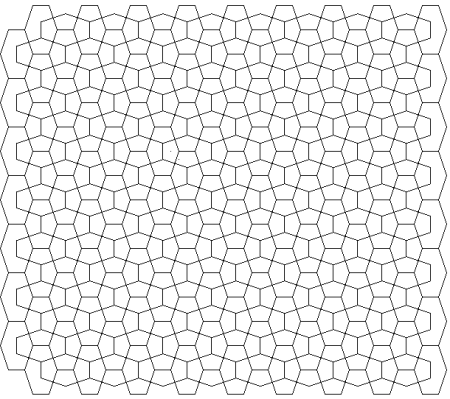
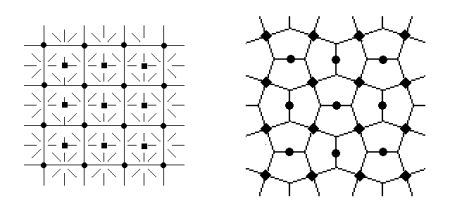
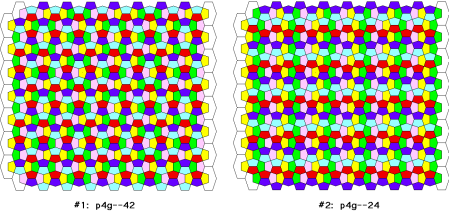
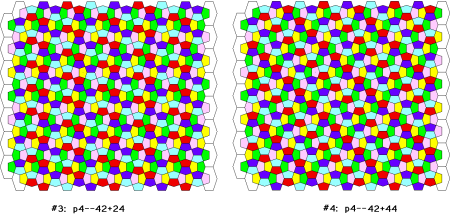

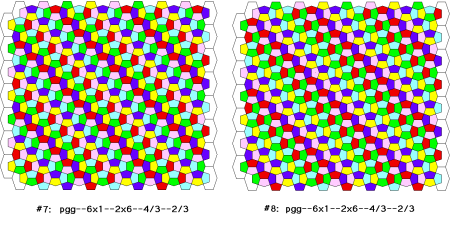


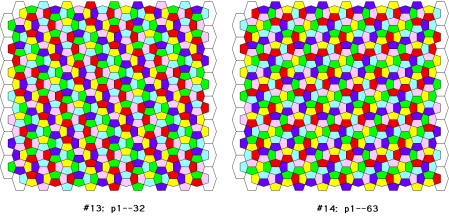
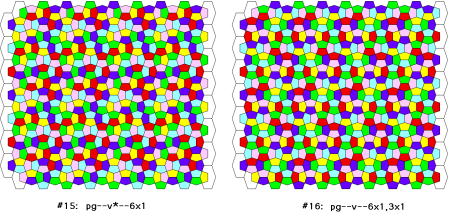

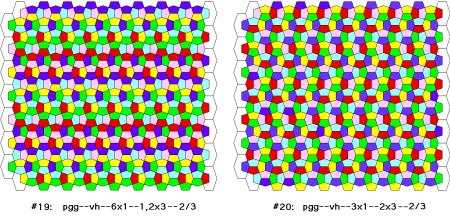
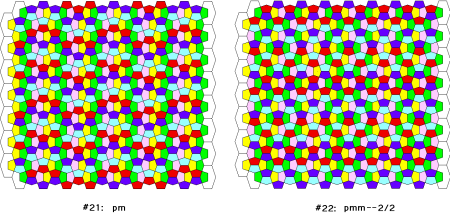
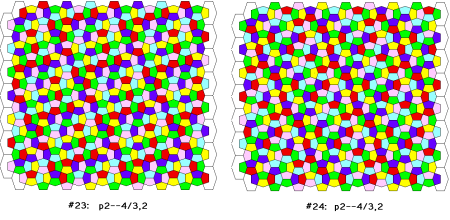
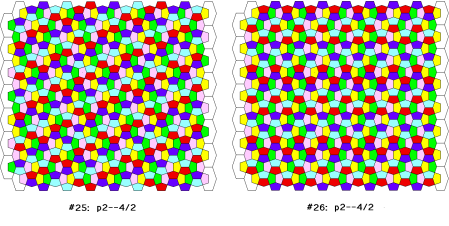
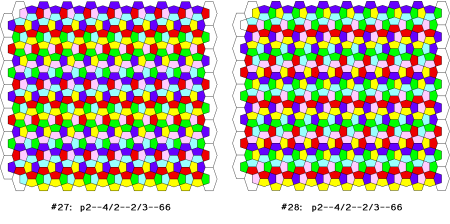
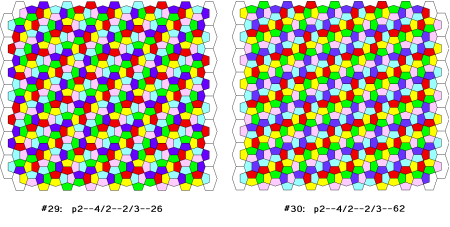
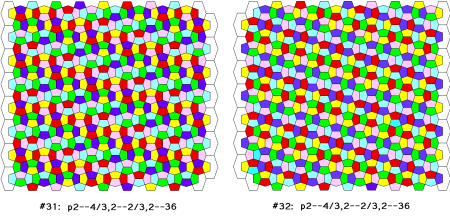
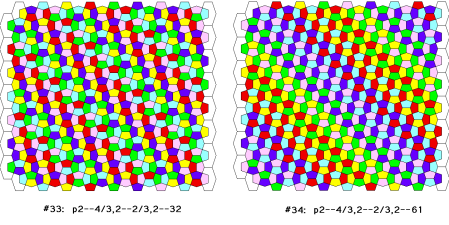
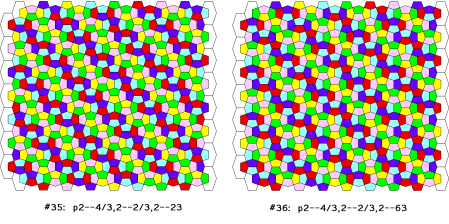


Leave a comment